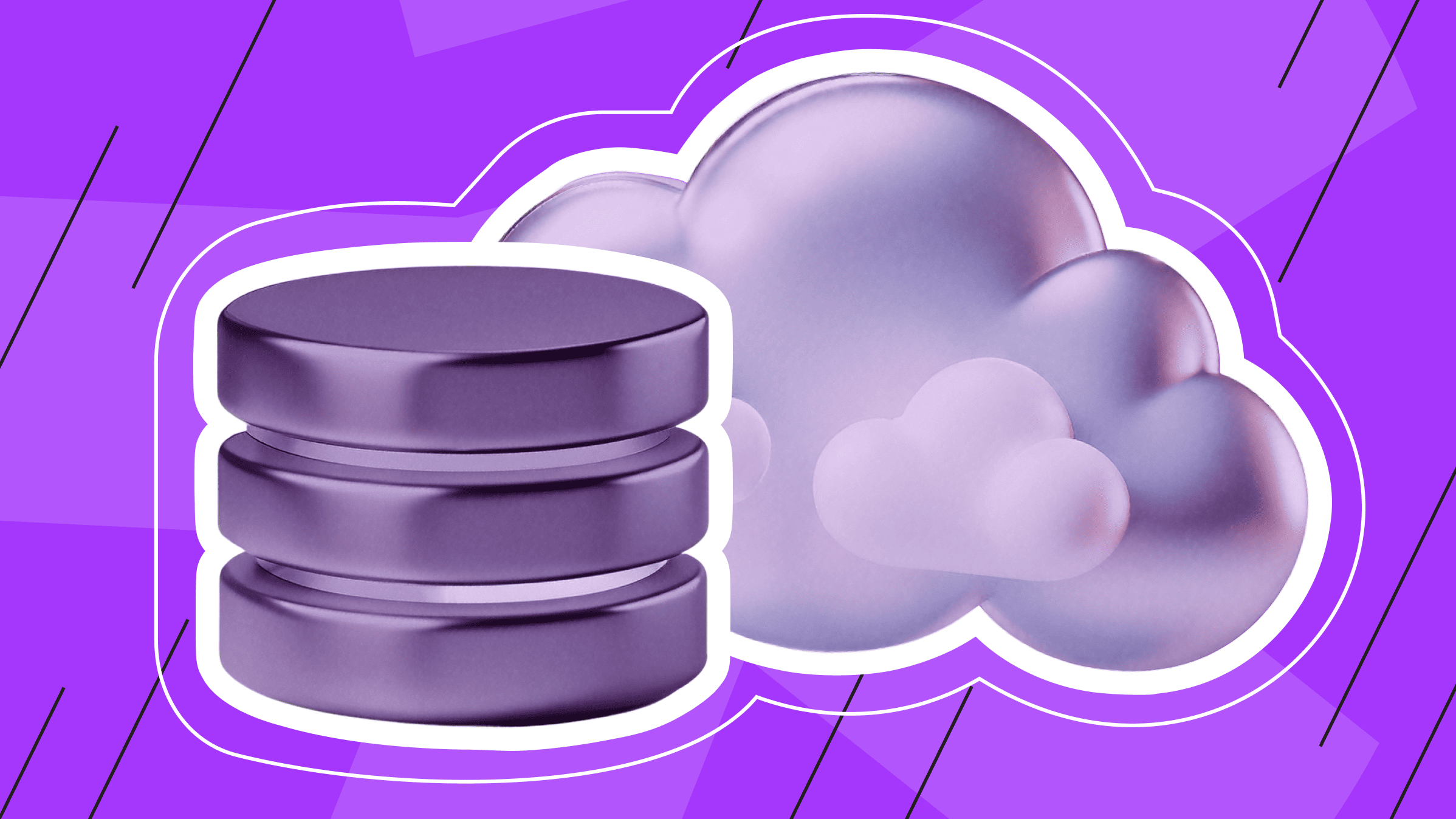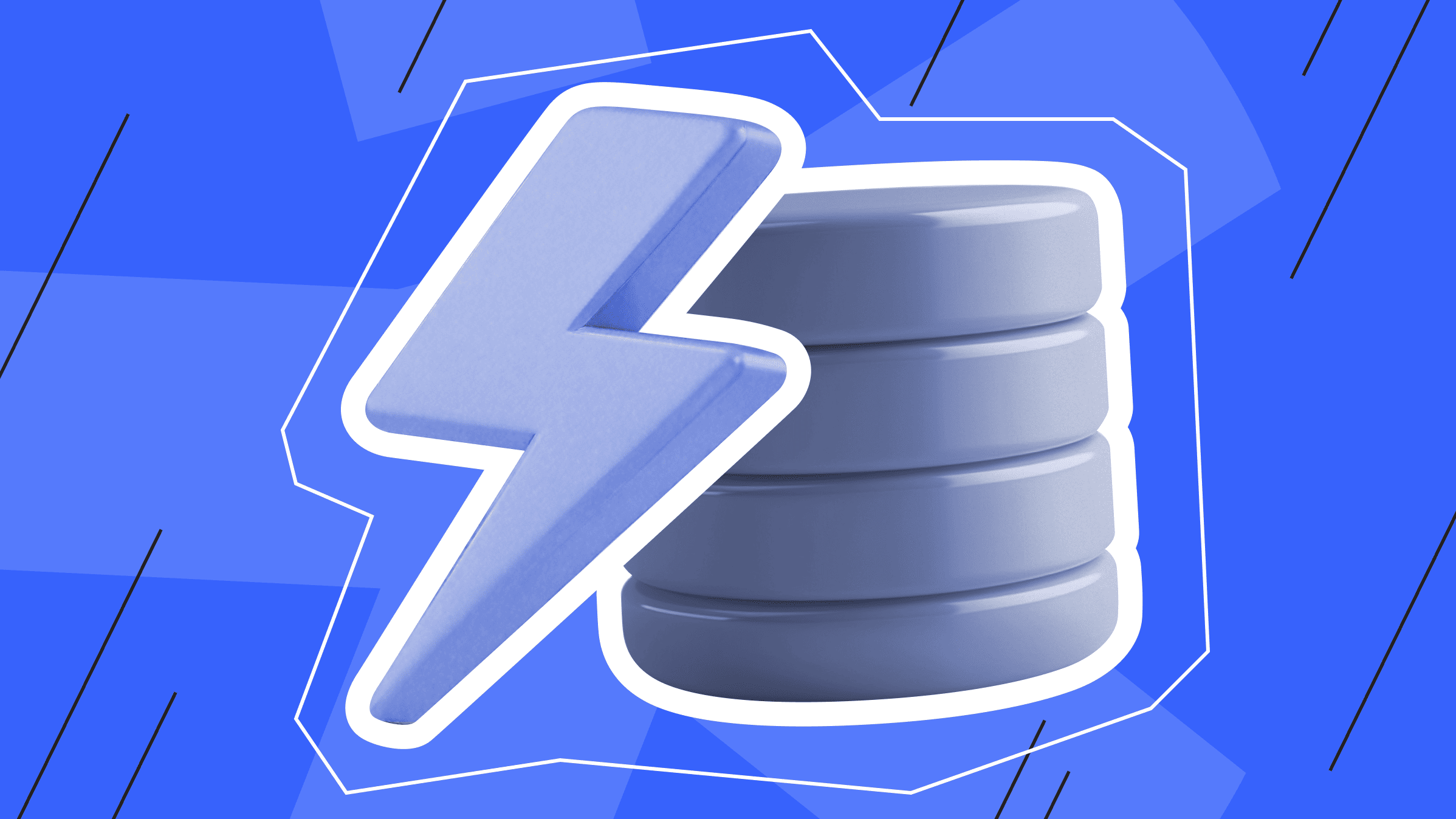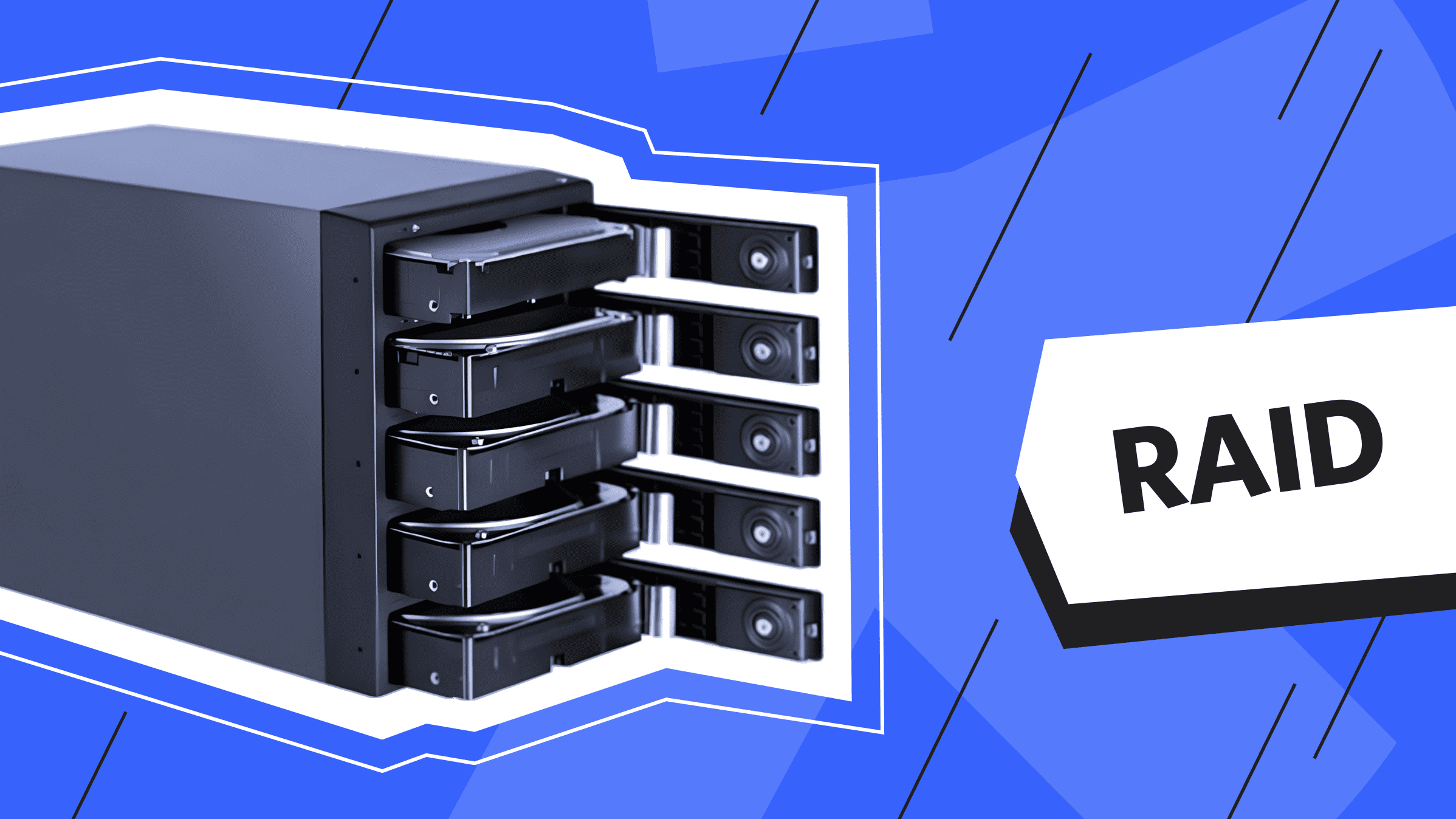
According to a 2024 report by Statista, the growing reliance on data for business intelligence, automation, and decision-making will drive the global database management system market to reach $70 billion soon. As companies scale and process increasingly complex data, understanding database servers is crucial for ensuring optimal performance, reliability, and security.
Data management is essential in today’s digital landscape, and a database server plays a key role in this process. A database server is a specialized system designed to store, manage, and process data for applications, websites, and business operations.
In this article, you’ll learn what a database server is, what it’s used for, and how it works. You’ll also explore different types of database servers, the top 5 database server software options, and the criteria for choosing one.
What Is a Database Server?

A database server is a machine running database software designed to provide database services. It’s critical in a client-server computing environment, offering vital information to client systems. Database servers consist of the hardware and software used to run the database.
- The software side of a database server is the back-end application of the database. It includes background processes and memory structures that access database files.
- The hardware side of a database server is the back-end system for storing and retrieving the database.
Processing large volumes of data efficiently requires large storage capacity and high memory density. Because of these requirements, databases are typically hosted on dedicated, high-performance machines.
What Is a Database Server Used For?
A database server stores, manages, and retrieves data for applications, websites, and business processes. It is a central system that manages all database operations, ensuring that data is always available, secure, and organized. The database server responds to client requests and helps perform operations such as queries, updates, and data transactions.
There are several uses for database servers:
- Working with large amounts of information.
Database servers are ideal for client-server architectures where clients frequently process data.
- DBMS recovery and security.
A DBMS (database management system) places restrictions on database servers. All clients connected to the server are monitored and managed by the server. It also processes and manages all requests to access the database.
- Concurrent access control.
Database servers allow many users to access the database simultaneously while maintaining security and hiding the DBMS from clients.
- Storing applications and files that are not part of the database.
Some organizations prefer database servers over file servers.
Modern applications require database servers to manage large amounts of data in real-time, ensuring a seamless user experience. Database servers support scalable and reliable data storage for applications ranging from e-commerce platforms to mobile apps, business intelligence tools, and cloud services. They ensure data security, availability, and performance in increasingly complex, data-driven environments.
How Does a Database Server Work?

The database server manages and processes requests related to database operations, including storing, retrieving, updating, and organizing data.
Using the client-server model it provides users and applications with access to data. The following sections present the architecture and the main components of a database server.
Database Server Architecture
In most cases, the architecture of a database server follows the client-server model, which includes the following components:
- Client
A client is a program that sends requests to a database server. This could be a website application, business software, or a system with a user interface that requires access to data stored on the server. Clients access the database server through a front-end application that displays the requested data on the client machine or a back-end application that runs on the server and manages the database.
- DBMS
A DBMS is software that runs on the server and manages the database. It handles all operations related to storing, retrieving, and managing data. Some DBMSs, such as MySQL, require a client-server model to access the database, while others provide database server functionality. Other DBMSs, such as SQLite, are used for embedded databases.
Clients can call the DBMS using the API provided by the ODBC (Open Database Connectivity) standard. ODBC requires client and server-side software.
- Database Server
A database server is a physical or virtual private server where the DBMS runs and stores the database itself. Its main job is to receive requests from client machines, find the required data, and provide the results.
The database server can be part of a more extensive distributed architecture, where multiple database servers work together to manage large data sets and provide high availability and fault tolerance.
In such cases, a “master-slave” model is useful. The central data storage location is the master database server, and slave database servers are copies of the master server used as proxies.
Maximize your budget with our high-performance VPS solutions. Enjoy fast NVMe, global reach in over 35 countries, and other benefits.
Key Components and Processes of a Database Server
The database server consists of several key components and processes that work together to ensure effective data management:
|
Components |
Processes |
|
DBMS Engine |
Handles SQL queries and transactions, and manages the data warehouse. Interprets and executes commands to ensure accurate data storage and retrieval. |
|
Data Storage Management |
Manages the physical storage of data on the server's hard drives or other storage systems. Includes logs, data files, and indexes essential for efficient data retrieval and maintaining data integrity. |
|
Query Processor |
Analyzes client SQL queries and translates them into actions the database engine can execute. Optimizes queries to improve performance and provide accurate results. |
|
Transaction Management |
Ensures that database operations are performed correctly. Maintains ACID properties to keep data accurate and consistent, even if a transaction fails. |
|
Concurrency Management |
Handles multiple requests from different users or applications. Ensures simultaneous access and modifications occur without conflict and helps maintain data confidentiality. |
|
Backup and Recovery |
Includes mechanisms for backing up and recovering data. Ensures that data can be restored and won’t be lost in the event of server failure or damage. |
|
Security Management |
Controls user access and permissions, allowing only authorized users to use and modify the database. Provides encryption for storing and transmitting data, helping protect sensitive data. |
Conclusion:
A database server operates by receiving client requests, processing them through its core components, and efficiently managing data storage and retrieval. While the architecture of a database server typically follows the client-server model, components like the database engine, query processor, and transaction management system ensure reliable, secure, and optimized data processing for modern applications. These processes are essential for maintaining high performance, security, and data integrity in today’s complex, data-driven environments.
Types of Database Servers

Depending on the data structure and application requirements, database servers are divided into three types:
- Relational database servers
- NoSQL database servers
- Cloud database servers
In the following sections, we will discuss each of these types of database servers in detail.
1. Relational Database Servers
Relational database servers use Structured Query Language (SQL) to manage and query data stored in tables. The relational model organizes data into rows and columns, with foreign and primary keys establishing relationships between different data entities.
Examples: MySQL, PostgreSQL, Microsoft SQL Server, Oracle Database.
How Do Relational Database Servers Work?
Relational database servers store data in tables, each containing a specific set of information. SQL queries perform operations such as inserting, updating, and retrieving data from these tables. Foreign keys create relationships between different entities, and the ACID (Atomicity, Consistency, Isolation, Durability) properties ensure transaction integrity.
Relational Database Server Use Cases
Relational database servers are ideal for applications that require structured data, such as:
- Financial systems
- Inventory management systems
- Customer relationship management (CRM) systems
These servers are widely used in business environments because they guarantee high consistency.
2. NoSQL Database Servers
NoSQL database servers are designed to handle semi-structured or unstructured data. Unlike relational databases, NoSQL systems are not based on tables and rows. They offer various data models, such as document, key-value, and wide column and graph stores. These models provide more flexibility when handling large volumes of diverse data.
Examples: MongoDB, Cassandra, Redis, CouchDB, Neo4j.
How Do NoSQL Database Servers Work?
NoSQL databases offer more flexible data storage. They can store data in various formats like plain text, JSON, and XML, and they can scale horizontally by distributing data across multiple servers. Depending on the storage method and use case, data may be stored as graphs (in Neo4j), key-value pairs (in Redis), or documents (in MongoDB).
NoSQL Database Server Use Cases
NoSQL database servers are ideal for applications that require scalability, flexibility, and fast response times. These include:
- Social media platforms
- Real-time analytics
- Content management systems
- Big data applications
They work well with semi-structured or unstructured data, such as logs, sensor data, or user-generated content.
This ideal solution for large-scale projects offers unbeatable protection, high performance, and flexible settings.
3. Cloud Database Servers
Cloud service providers, such as is*hosting, build and manage cloud database servers that offer scalable and adaptable data storage. These servers provide several cloud computing benefits, including easy setup, automatic scaling, high availability, and reduced infrastructure management overhead.
Examples: Amazon RDS, Google Cloud SQL, Microsoft Azure SQL Database, MongoDB Atlas.
How Do Cloud Database Servers Work?
The cloud service provider is responsible for maintaining, scaling, and defending cloud database servers. Users can choose relational or NoSQL databases based on their needs, with the service provider automatically adjusting resources according to traffic to ensure the system remains available and optimized for performance.
Cloud Database Server Use Cases
Cloud database servers are ideal for companies seeking scalability, fast availability, and disaster recovery without the burden of managing physical infrastructure. They are widely used in the following scenarios:
- SaaS applications
- E-commerce platforms
- Enterprises that need fast deployment and wide distribution
Conclusion:
The choice of database server depends on the application structure and its requirements. Relational database servers are ideal for structured transactional data, while NoSQL database servers are better suited for large applications with unstructured data. Cloud database servers offer scalability and ease of management for growing businesses. Each type has advantages, depending on the data type, performance requirements, and scalability.
Top 5 Database Server Software Options
The following sections provide a brief overview of the top 5 database server software options.
1. MySQL

MySQL is one of the most well-known open-source relational database management systems (RDBMS). Popular for its speed and reliability, it is widely used in web applications, especially for dynamic websites and applications.
Best suited for: Web applications, e-commerce, and content management systems.
|
MySQL Advantages |
MySQL Disadvantages |
|
|
2. PostgreSQL

PostgreSQL is an advanced open-source relational database that supports SQL and JSON data types. It is known for its reliability, extensibility, and SQL compliance.
Best suited for: Complex applications requiring high reliability and advanced data processing capabilities.
|
PostgreSQL Advantages |
PostgreSQL Disadvantages |
|
|
3. Microsoft SQL Server

Microsoft SQL Server is a sophisticated enterprise DBMS designed for high-performance applications. It provides deep integration with Microsoft products.
Best suited for: Large enterprises, financial applications, and enterprise environments.
|
Microsoft SQL Advantages |
Microsoft SQL Disadvantages |
|
|
4. MongoDB

MongoDB is a NoSQL database that stores data in flexible documents like JSON. It is designed to handle horizontal scaling and unstructured data in distributed systems.
Best suited for: Big data applications, real-time analytics, content management, and IoT applications.
|
MongoDB Advantages |
MongoDB Disadvantages |
|
|
5. Oracle Database

Oracle Database is a powerful enterprise-grade relational database management system known for its scalability and feature set, especially for large enterprises.
Best suited for: Large enterprises and businesses, especially those that require complex, high-performance databases.
|
Oracle Database Advantages |
Disadvantages |
|
|
Conclusion:
Each of these database server software options excels in specific areas. MySQL and PostgreSQL are great for web applications, with PostgreSQL offering more sophisticated capabilities. MongoDB is suitable for scalable applications and unstructured data, while MS SQL Server is ideal for enterprises using Microsoft technologies. Large companies often choose Oracle Database for its reliable performance and high availability, though its higher price may be a consideration.
Criteria for Selecting Database Server Software
Several important factors must be considered to ensure your database server software meets your application and infrastructure needs. The following sections outline the key criteria for selecting database server software.
Scalability and Performance
Scalability ensures the database can handle increasing user traffic and data as your application grows. When selecting database server software, consider whether the database supports vertical (resource expansion) or horizontal (distributed) scaling. Performance determines how quickly you can retrieve and process data. Whether you’re processing large transactions or datasets, choosing a database that meets your specific performance needs is essential.
Security Features
Security is critical in database management. Choose a database with built-in encryption for data in transit and at rest. Role-based permissions, audit logs, and access control systems are also necessary for securing your data. Additionally, ensure the database complies with industry regulations and standards such as GDPR or HIPAA.
Compatibility and Ecosystem
It’s essential to check if the database server software is compatible with your current technology stack and other tools or platforms. Ensure the database supports the programming languages, frameworks, and APIs you need. Building a strong ecosystem with active corporate or community support will also help troubleshoot and scale your application efficiently.
Reliable storage for backups of your projects. is*hosting guarantees data protection.
Best Practices for Setting Up and Managing a Database Server
Setting up and managing a database server involves several key steps to ensure uptime, data integrity, and long-term reliability. The following sections provide some best practices for this process.
Installation and Configuration
The first step is to install the database server software on your machine. This typically involves following the setup instructions and downloading the appropriate version of the software. During setup, you may want to adjust settings such as storage location, user access, and network configuration. Tuning the database server for optimal performance includes adjusting memory allocation, query caching, and connection limits based on workload.
Backup and Recovery Strategies
Develop a backup and recovery plan with regular automated backups to protect your data. Depending on the size of the database and recovery needs, this may include full, incremental, or differential backups. Periodically test your backup restores to ensure the recovery process is successful. Off-site backups, such as cloud storage, offer additional protection in a server failure or disaster.
Monitoring and Maintenance
Monitoring is essential for maintaining optimal database performance. Use tools to monitor metrics such as query performance, server resource utilization, and disk space. Regular maintenance includes keeping your software up-to-date with patches and updates, cleaning up old or unnecessary data, and optimizing database performance with indexing. Conducting regular health checks and performance tuning will help prevent errors and ensure stable operation.
Conclusion
In conclusion, database servers play a crucial role in managing and protecting data to ensure optimal performance, reliability, and security. As companies increasingly rely on data-driven applications, future trends such as cloud databases, AI-based optimization, and serverless architectures are shaping the emerging technology landscape. To ensure the continued effectiveness and security of database management systems in modern applications, it is essential to understand the basics of database server management and stay informed about new advancements.
VPS
Choose the suitable configuration and enjoy all the benefits of a virtual private server.
From $5.00/moBackup Storage
Store your backups in a safe place — is*hosting takes care of the protection.
Get $2.00/mo

